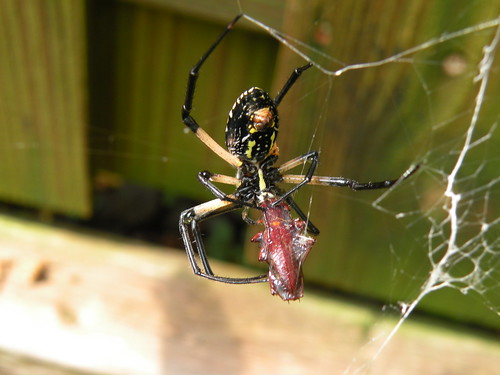
Housing Spiders in the Classroom
Wolf spiders are relatively easy to keep if you keep in mind some basic requirements. For classroom study, it works well to collect some spiders, hold them for several days and then release them where they were originally found.
Water
All spiders and especially small ones, require a constant source of moisture. The largest (and quickest) source of mortality for spiders in the lab is dessication. The best means of providing moisture is to have something that will hold moisture for at least a week so if you forget to check it everyday, the spiders will still be okay. You can do this by giving the spider a cotton ball (or a piece of sponge) that is damp; or a wick of cotton or cheese cloth that extends into a small pool of water.
If you are trying to keep spiderlings or baby spiders remember that the surface tension of water is stronger than they are! With baby spiders it is important to not have freestanding drops of water.
Feeding
Wolf spiders have a fairly flexible abdomen that helps them to be able to eat a lot of food when it is present. They also can do fairly well without much food for a week or longer as they are able to decrease their metabolism when food is absent.
Wolf spiders will eat a large number of different kinds of prey. They can take a prey item their own size or smaller and do best with flies, crickets and other spiders. The exoskeleton on many beetles is too tough. In addition to taking live prey, wolf spiders will scavenge and get nourishment from carcasses. You can sometimes see a spider pick up a leg or a wing from a cricket. Different species may show different prey preferences or abilities to subdue prey. Also, species may differ in how much they are willing to scavenge. Some insects may have some defenses against spiders.
Potential prey items for wolf spiders include house flies and mosquitos, crickets, beetle larvae (meal worms) and other spiders. Wolf spiders often will capture a prey item by grabbing the prey and then the spider will flip over onto its back while holding the prey item in its fangs. This may be particularly useful when grabbing a cricket as the strong jumping legs of the cricket could puncture the spiders abdomen.

No comments:
Post a Comment